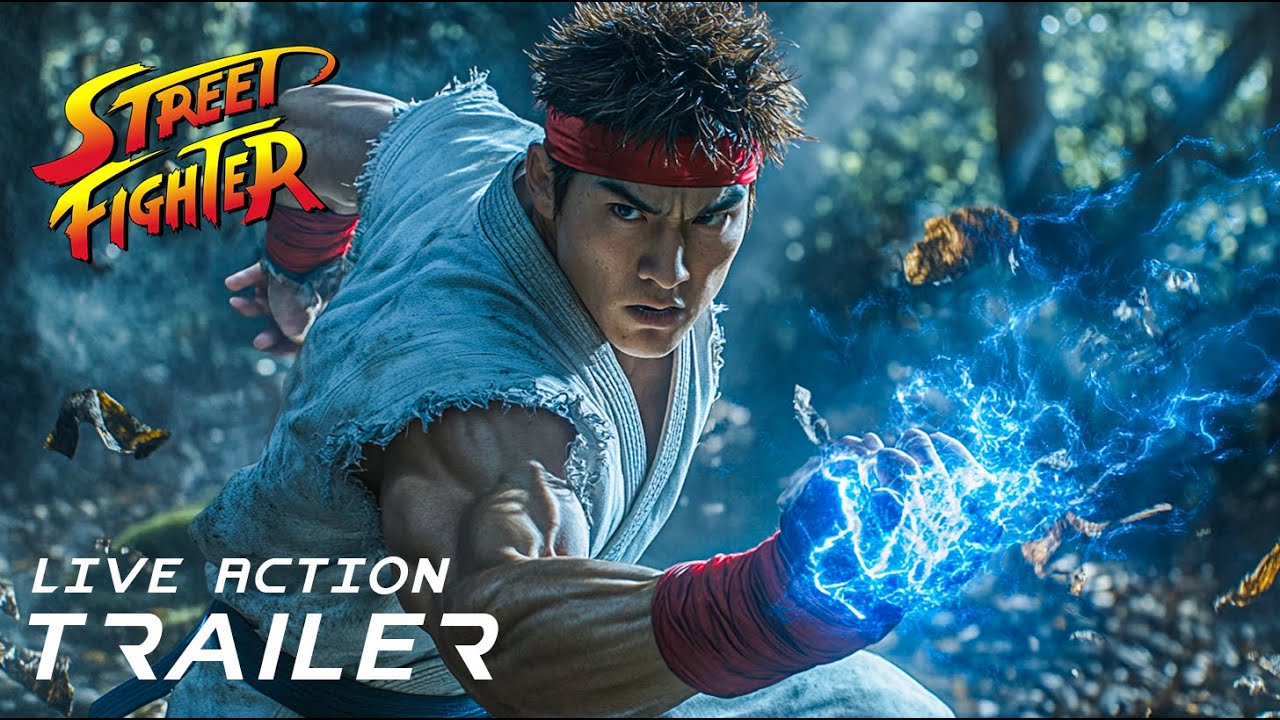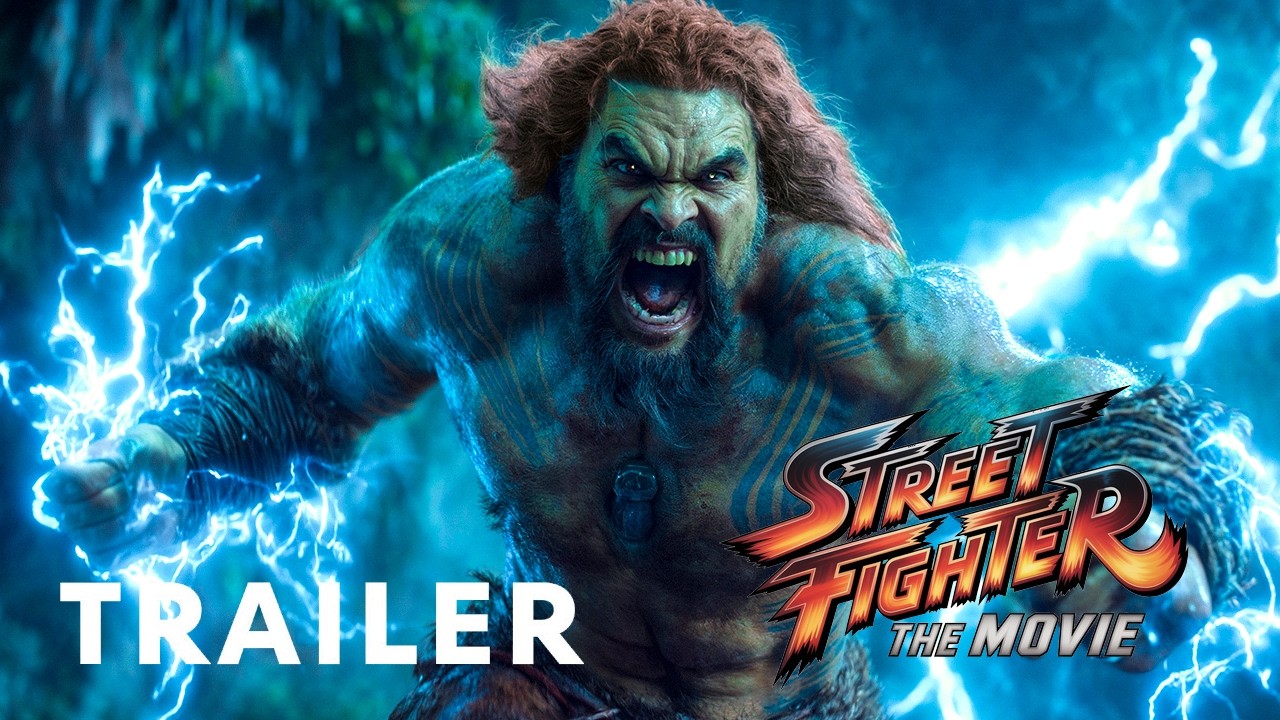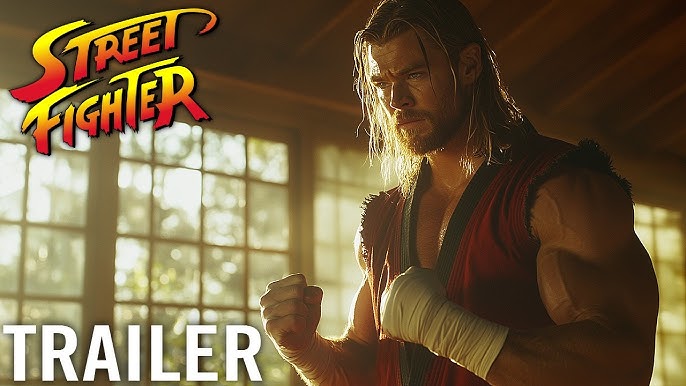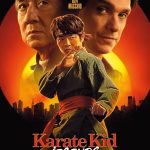Street Fighter (2025)

Street Fighter (2025)
Starring: Dwayne Johnson, Chris Hemsworth, Anya Chalotra
Street Fighter (2025) is an electrifying cinematic experience that brings the iconic world of the legendary video game franchise to life with a level of intensity, spectacle, and emotional depth that fans have been waiting for decades. This film is a full-throttle fusion of martial arts mastery, explosive action sequences, intricate character arcs, and a compelling storyline that examines the human spirit, courage, and the cost of power. From the opening scene, audiences are transported into a world where the stakes are high, the fighters are elite, and every punch could alter the course of destiny.
The film opens with a sweeping panoramic view of a sprawling metropolis, a cityscape that is as dangerous as it is mesmerizing. Towering skyscrapers cast long shadows over neon-lit streets teeming with life, yet beneath this bustling exterior lies a dark underworld dominated by crime, corruption, and clandestine organizations. This is the setting for the most anticipated martial arts tournament in history—the Street Fighter tournament—where the world’s most formidable fighters converge, each carrying their own motivations, personal vendettas, and hidden secrets. The atmosphere is tense, charged with anticipation, as the audience is made aware that this is no ordinary competition.
At the heart of the film is Dwayne Johnson as M. Bison, the ultimate antagonist whose presence dominates every frame he occupies. Bison wields the destructive force of Psycho Power, a mysterious and terrifying energy that amplifies his physical prowess while allowing him to manipulate others with psychological precision. Johnson brings his signature charisma, immense physicality, and commanding presence to the role, creating a villain who is both magnetic and menacing. Bison is not a one-dimensional tyrant; he is a calculating strategist who thrives on chaos, using fear and manipulation to maintain control. Every gesture, every glance from him conveys a mix of confidence, menace, and intelligence, establishing him as an almost mythic figure whose power looms over the tournament and the lives of all the fighters.
Opposing Bison is Chun-Li, portrayed by Anya Chalotra, who emerges as a symbol of courage, discipline, and unwavering moral fortitude. Chun-Li’s backstory is deeply woven into the narrative, giving her motivations emotional weight beyond the fight sequences. She trains rigorously, combining speed, agility, and precise technique in a way that translates seamlessly to the screen. Chalotra embodies Chun-Li with a perfect balance of grace and intensity, capturing the essence of a fighter whose skill is matched only by her determination to fight for justice. Her fight sequences are choreographed with meticulous attention to detail, blending high-speed martial arts with fluid acrobatics that keep viewers on the edge of their seats. Each kick, punch, and aerial maneuver is executed with precision, conveying both power and elegance.
Chris Hemsworth plays Guile, a military officer whose sense of duty, integrity, and unwavering commitment to protecting others defines his character. Guile’s presence serves as a counterbalance to the raw energy of Bison and the focused precision of Chun-Li. Hemsworth’s performance captures the disciplined mindset of a soldier trained to act decisively under pressure, yet the character is layered with moments of vulnerability that humanize him. Guile is not merely a combatant in the tournament; he is a moral anchor, reminding both the audience and his fellow fighters of the higher stakes at play. His physicality, combined with a natural charisma, ensures that his presence is felt in every confrontation, whether he is strategizing in the heat of battle or standing firm against seemingly insurmountable odds.
While the film is anchored by its lead characters, the supporting fighters also add depth, diversity, and complexity to the story. Each competitor has a unique fighting style, backstory, and personal stake in the tournament. From agile street fighters and disciplined martial artists to powerhouse combatants and mysterious warriors wielding supernatural abilities, the ensemble cast creates a dynamic and ever-shifting landscape of conflict and camaraderie. The interactions between fighters are as compelling as the fights themselves, with alliances, rivalries, and betrayals developing naturally throughout the story. This complex web of relationships enhances the emotional resonance of the action, giving each battle weight beyond its visual spectacle.
A defining feature of Street Fighter (2025) is its breathtaking visual style, which blends cutting-edge CGI with practical stunts and martial arts choreography. Signature elements from the video games, such as fireballs, sonic booms, and other special moves, are translated into cinematic language with astonishing realism. Fireballs burst from fighters’ hands with explosive energy, leaving trails of light and smoke that illuminate the arena. Sonic booms and projectile attacks are rendered with a sense of tangible force, making the audience feel the impact of each strike. The film also introduces spirit beasts and mystical manifestations that interact with the characters in both combat and narrative sequences, adding a fantastical layer that honors the game’s original lore while expanding its cinematic possibilities.
The action sequences themselves are intricately staged, combining traditional martial arts with modern cinematic techniques to create a sense of immediacy and immersion. Close-up shots, sweeping crane angles, and dynamic tracking shots capture the intensity of combat from multiple perspectives, allowing the viewer to experience the adrenaline of each clash. Hand-to-hand combat is meticulously choreographed, with attention paid to the rhythm, pacing, and timing of each sequence. Every punch, kick, and throw is delivered with clarity, ensuring that the audience can follow the technical prowess of the fighters while remaining emotionally engaged. The use of practical stunts adds a layer of authenticity, grounding the larger-than-life action in tangible physicality.
Beyond the action, the film excels in its exploration of character motivations, emotional arcs, and moral dilemmas. Chun-Li’s journey is one of perseverance and justice, as she confronts not only external threats but also her own fears and doubts. Guile’s struggle involves balancing duty with compassion, navigating a world where the line between right and wrong is often blurred. M. Bison’s character offers a fascinating study in ambition and corruption, illustrating how the pursuit of absolute power can consume even the most disciplined minds. These narrative threads are interwoven seamlessly with the action, ensuring that the story is never merely a succession of fights but a fully realized tale of heroism, sacrifice, and resilience.
The screenplay also incorporates moments of humor and levity that provide contrast to the high-stakes action. Quips, banter, and playful rivalries between characters offer glimpses of personality and camaraderie, making the fighters feel like real, multidimensional individuals. These lighter moments are strategically placed, providing emotional relief and emphasizing the humanity of the characters, which in turn makes the perilous action sequences feel even more impactful. The dialogue is sharp and often layered with subtext, reinforcing themes of loyalty, honor, and personal growth while maintaining a pace that keeps the audience engaged from start to finish.
The pacing of the film is expertly handled, with tension escalating steadily as the tournament progresses. Early rounds establish the stakes and introduce key players, allowing the audience to understand each fighter’s unique abilities and motivations. Midway through the story, unexpected twists, betrayals, and alliances heighten the drama, culminating in climactic battles that test the limits of both skill and spirit. The final confrontations are a spectacle of strategy, endurance, and raw power, where Chun-Li and Guile face Bison in battles that are as much about mental fortitude as physical strength. These sequences are carefully choreographed to deliver maximum excitement, combining breathtaking visuals, inventive fight mechanics, and high emotional stakes.
Another notable aspect of Street Fighter (2025) is its attention to world-building and visual detail. The city, arenas, and environments are meticulously designed, each location contributing to the narrative and thematic resonance of the story. From neon-lit backstreets and abandoned factories to grandiose stadium arenas, the settings serve as more than just backdrops—they are integral to the storytelling, shaping the action and influencing the strategies employed by the fighters. Cinematography emphasizes contrasts between light and shadow, chaos and order, reflecting the internal and external conflicts faced by the characters.
The score and sound design further elevate the cinematic experience. A pulsating soundtrack complements the kinetic energy of the fights, while subtle musical cues heighten emotional moments and character development. The sound of each punch, kick, and special attack is rendered with clarity and impact, creating a visceral experience that makes viewers feel the force of each strike. Strategic silences and shifts in musical tone enhance tension, providing an auditory counterpart to the visual spectacle that reinforces the stakes and drama of every scene.
The film also succeeds in honoring the legacy of the original Street Fighter games while introducing new elements to appeal to contemporary audiences. Iconic moves, signature catchphrases, and familiar character designs are faithfully represented, creating a sense of nostalgia for longtime fans. At the same time, the filmmakers expand on the lore, introducing deeper backstories, interpersonal dynamics, and narrative complexity that elevate the story beyond a straightforward tournament narrative. This balance of respect for the source material and innovative storytelling ensures that both new viewers and dedicated fans can fully engage with the film.
In terms of performances, Dwayne Johnson delivers a formidable portrayal of M. Bison, infusing the character with gravitas and menace while maintaining a sense of calculated intelligence. Chris Hemsworth’s Guile is both charismatic and grounded, embodying the archetype of the disciplined hero while offering moments of vulnerability that make him relatable. Anya Chalotra’s Chun-Li is a revelation, combining physical agility with emotional depth to create a heroine who is inspiring, complex, and utterly compelling. The chemistry between the leads enhances the narrative, providing both tension and camaraderie that enrich the story.
In conclusion, Street Fighter (2025) is more than just an action film—it is a fully realized cinematic world that merges thrilling martial arts combat, compelling character arcs, and breathtaking visual effects. It is a celebration of heroism, resilience, and the enduring appeal of one of the most beloved video game franchises of all time. Every punch, kick, and fireball is rendered with care and intention, delivering an experience that is as emotionally engaging as it is visually spectacular. Fans of the franchise will delight in seeing their favorite characters brought to life with such authenticity and passion, while newcomers will be drawn in by the high-stakes action, rich storytelling, and stunning cinematography. With unforgettable performances, explosive sequences, and a narrative that resonates long after the credits roll, Street Fighter (2025) stands as a landmark achievement in video game adaptations and a thrilling cinematic journey from start to finish.
Score: 7.6/10








